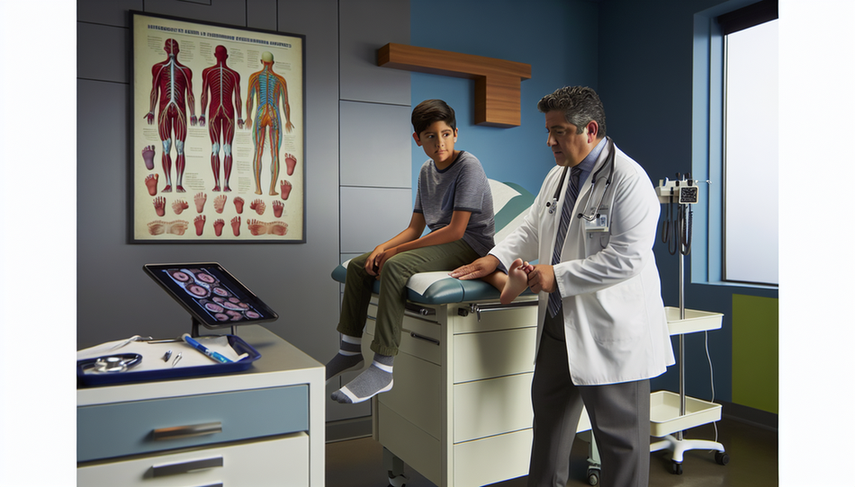Charcot-Marie-Tooth Disease: Early Diagnosis and Evaluation of Hereditary Peripheral Neuropathy through Electromyography and Differentiation of Ataxias

The Charcot-Marie-Tooth disease (CMT) is one of the most common hereditary peripheral neuropathies, characterized by progressive distal muscle weakness, atrophy, foot deformities, and distal sensory loss. This condition, also known as hereditary motor and sensory neuropathy, presents significant genetic heterogeneity, complicating its diagnosis and management. Early identification of CMT is crucial for implementing management strategies that can delay disease progression and improve patients' quality of life.
Diving into Diagnosis and Evaluation
The diagnosis of CMT primarily relies on clinical evaluation and neurophysiological studies, such as electromyography and nerve conduction studies. These assessments help differentiate between types of CMT, such as type 1 (demyelinating) and type 2 (axonal), and distinguish them from other conditions like hereditary ataxias and acquired inflammatory neuropathies. The clinical practice guidelines for the diagnosis and management of CMT emphasize the importance of a multidisciplinary approach, which includes genetic evaluation to identify specific mutations that may influence prognosis and treatment [1].
Next-generation sequencing has revolutionized the genetic diagnosis of hereditary neuropathies, allowing for the identification of previously unknown causative genes. However, despite these advancements, a significant percentage of patients remain without a definitive genetic diagnosis, underscoring the need for comprehensive clinical evaluation and a personalized approach to diagnosis [2].
Additionally, the evaluation of biomarkers and clinical outcome scales are under development to enhance diagnostic accuracy and monitor disease progression. These include muscle fat fraction assessed by magnetic resonance imaging and serum biomarkers such as neurofilament light, which could serve as surrogate endpoints in clinical trials [3].
Conclusions
Early diagnosis and accurate evaluation of Charcot-Marie-Tooth disease are essential for the effective management of this complex hereditary peripheral neuropathy. The integration of clinical, neurophysiological, and genetic studies, along with the development of new biomarkers, offers an opportunity to improve the diagnosis and treatment of CMT. As we move towards an era of disease-modifying treatments, the precise identification of CMT subtypes and the differentiation from other neurological conditions, such as ataxias, will be critical for therapeutic success.
Referencias
- [1] Clinical practice guidelines for the diagnosis and management of Charcot-Marie-Tooth disease.
- [2] Hereditary Neuropathies.
- [3] Clinical Outcome Assessments and Biomarkers in Charcot-Marie-Tooth Disease.
Created 13/1/2025
